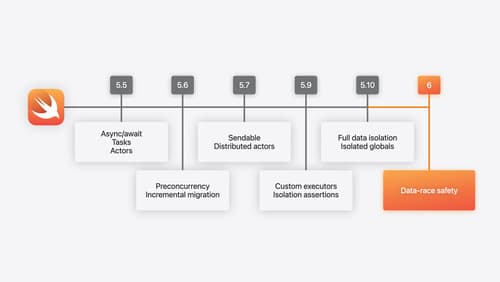how do I use swift data
Asked on 2025-03-20
1 search
To use Swift Data, you can follow these steps based on the information presented at WWDC:
-
Import the Framework: Start by importing the Swift Data framework into your project.
-
Define Your Models: Use the
@Modelmacro to define your data models. This macro is the core of Swift Data, allowing you to specify the schema for your app's data. -
Model Container: Use the
modelContainermodifier on your app'sWindowGroupto inform the view hierarchy about your models. This setup allows your views to query and display data from the model container. -
Custom Data Stores: Swift Data allows you to use custom data stores. You can configure your model container to use a custom backend, such as JSON files or a remote web service, by swapping out the default configuration with your custom data store.
-
Querying Data: Use the
querymacro to fetch data from the model container. You can optimize queries with complex filters and the newindexmacro to improve performance. -
Track Changes: Swift Data provides a history API to track changes in your data, which is useful for syncing with remote services or updating UI elements based on data changes.
For a detailed walkthrough, you can refer to the session What’s new in SwiftData (00:00:57) which covers adopting Swift Data, customizing schemas, and more. Additionally, the session Track model changes with SwiftData history (00:00:45) provides insights into using the history API to track data changes.

Swift Charts: Vectorized and function plots
The plot thickens! Learn how to render beautiful charts representing math functions and extensive datasets using function and vectorized plots in your app. Whether you’re looking to display functions common in aerodynamics, magnetism, and higher order field theory, or create large interactive heat maps, Swift Charts has you covered.

Platforms State of the Union
Discover the newest advancements on Apple platforms.

What’s new in Swift
Join us for an update on Swift. We’ll briefly go through a history of Swift over the past decade, and show you how the community has grown through workgroups, expanded the package ecosystem, and increased platform support. We’ll introduce you to a new language mode that achieves data-race safety by default, and a language subset that lets you run Swift on highly constrained systems. We’ll also explore some language updates including noncopyable types, typed throws, and improved C++ interoperability.
